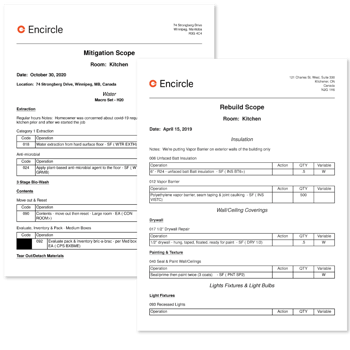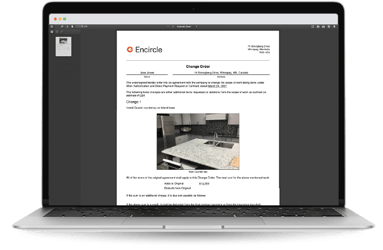On average, restorers charge between $3,000-$5,000 for a job. While this statistic may not surprise you, another one should get your attention: restoration contractors can charge anywhere from $500 to $3,000 more for the services they provide for the same job! Naturally, some circumstances govern the difference in the rates and charges.
The question you may be asking is: why do some restorers charge more for the same work? The question you should be asking is: how can I charge more? The answer: increase charge outs that add value and capture every part of the scope on every job.
Why Do Some Contractors Charge More for the Same Services?
While the book of business may play a role in other restorers’ charge outs, it is likely that those restoration contractors are doing a better job of writing their scopes and capturing all the line items associated with the job.
When experienced restorers fully scope a job, they are able to add anywhere from 10% to 100% more charges to each invoice. They are able to capture line items that other restoration contractors miss on their scope, even though both restorers are doing the same work. The difference is that these experienced restorers are charging for all of the work they complete instead of giving away small parts of the job for free.
Finding this revenue is not as hard as you might think and is actually something that most restorers are able to do by spending a little more time on site documenting and planning out their job.
4 Ways You Can Increase Charge Outs Right Now
 1. Leverage Standards and Laws
1. Leverage Standards and Laws
As a restoration contractor, you can justify certain charge outs simply by adhering to industry standards and the local, state, or federal laws. Being able to quote following regulations can eliminate any challenges you may get from reviewers or TPAs.
The question you have to ask is when is the last time you referred to the standards, pulled the section, and added the quote to your estimate to support your proposed mitigation plan before sending it to the client?
 2. Capture 100% of the Scope
2. Capture 100% of the Scope 
Most restorers leave out 5%-15% of the scope on any given job. Would you be willing to spend a little extra time to complete a full scope if it increased your profits? Doing so reduces your liability, and gets you paid for work you’re probably already doing.
We call this front loading the job. You take a little more time at the beginning to properly document your job, plan and justify your actions to save yourself time and avoid frustration at the end of the job.
 3. Size Your Jobs Correctly
3. Size Your Jobs Correctly
Sizing your job correctly means having the right equipment and crew to complete the work according to job specifications. It also means taking on jobs that are profitable based on your current capabilities. Stay profitable by focussing on restoration jobs you are capable of handling, be knowledgeable with invoicing, and defend your mitigation strategy with solid documentation.
 4. Charge for Change Orders
4. Charge for Change Orders 
You may need to add one or more tasks to a project’s scope of work after you have already started rebuilding. If so, are you charging the difference for the added work or are you doing it for free? If you’re not charging for change orders, that additional work will eat into your profits.
Improve your profitability!
See how Encircle, a leading all-in-one documentation tool, is helping restorers improve their margins with solid documentation.
 By: The Encircle Team
By: The Encircle Team
